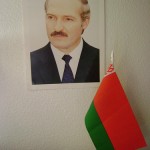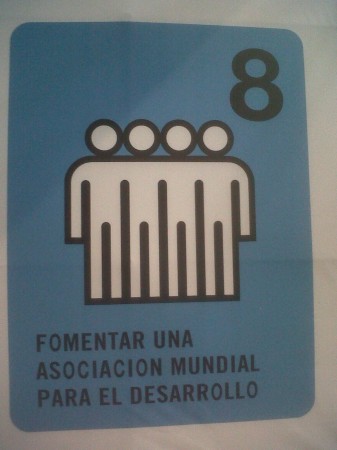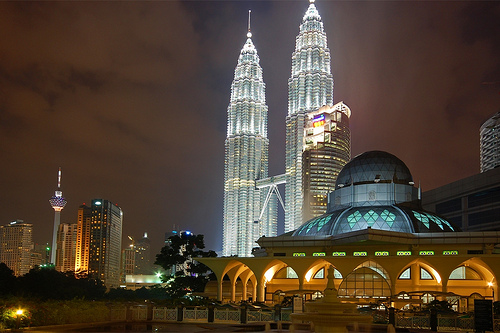Test your knowledge about scarcity, the topic of our latest Special Report.
[QUIZZIN 34]
Test your knowledge about scarcity, the topic of our latest Special Report.
[QUIZZIN 34]

Alexander Lukashenko is still there, whether you like it or not. As president of Belarus since 1994 he has overseen the ostensible stabilization of his country, if you are willing to ignore how it has been achieved, that is.
But what are Lukashenko’s prospects after the next presidential election, expected to be held at the beginning of 2011?
After the collapse of the Soviet Union (a collapse it opposed) Belarus took a unique way, different from the 14 other former Soviet states. While the others went through political, economic and social turmoil, Belarus’ path resembled that of a light version of Soviet socialism with stability and modest prosperity.
Over the years, Lukashenko centralized economic and political power in the hands of his regime. Two thirds of Belarus’ economy is still state owned. This in turn assured loyalty from the bureaucracy and the political elites who could not get access to sources of national wealth, which would have allowed them to develop a political appetite and gain leverage. Unlike in Ukraine or Russia, no ‘oligarch class’ could develop, making the president the ultimate re-distributor of wealth and political power in the country.
After the constitutional reform of 1996 a semi-presidential system was established that led to a complete dismantling of a western-style system of checks and balances. The legislative powers of the parliament are weak, the president controls the executive branch and the judiciary is simply an extension of the presidential administration. Since there is no liberal elite, pressure for liberalization and cooperation with the West is practically non-existent.
Another pillar of regime stability is sustained public support, despite rigged elections and lack of freedoms. Opinion polls from 2006 and 2008 demonstrate public support for the Lukashenko regime and its ability to ensure economic growth, low unemployment and social welfare – underlying the regime’s sustainability in a very real, tangible way.
Yet, what looks like a success story comes at a price that will be increasingly felt in the future – dependence on Russia.

Mexico is a country that has been in the news a lot recently, especially because if its tragic war on drugs. But it is also the host country for this year’s World Youth Conference; an event that tries to shape global youth policy past 2015 and the deadline of the Millennium Development Goals.
Considering that almost 50 percent of the world population is composed of young people and children, this conference is crucial for shaping the future lifeline of society, particularly as young people are most affected by poverty. Unfortunately, this conference and this topic is not being taken seriously by a large majority of countries, especially in Europe. And so far, the conference has not been covered by western media.
This lack of interest for youth policy is clearly problematic. As the World Bank reports, better youth policies increases the GDP of a country significantly over the long term. It also helps to create a more stable and safe society.
In the aftermath of the financial crisis, why have governments, and especially western governments, not started to address the problems of the generation that is and will be most affected by the crisis? As the ILO reports, the current generation of young people threatens to become a lost one, due to high unemployment rates and a lack of appropriate policy responses from governments.

The world appears to be in the midst of transitioning from a planet of relative surplus to one of scarcity. This week the ISN examines what happens when ever-more acute resource limitations meet unsustainable consumption patterns.
This ISN Special Report contains the following content:

In a rather widely reported move, PAS, the conservative Islamic opposition party that rules several states in northern Malaysia, recently launched a publicly distributed ‘Islamic currency’ in Kelantan state. The gold and silver coins, worth $180 and $4 respectively, will be used in transactions by 1,000 outlets in the state and will become, so the eager authorities say, an optional means of payment for civil servant salaries and a currency for the payment of Islamic alms, or Zakat. The state government also announced that gold bars would be issued for bigger investments and that coins worth $630,000 had sold out on the first days of trading.
The CEO of Kelantan Golden Trade, the state company in charge of implementing the currency reform stated that: “The arrival of these coins mark the end of 100-year old Darurah [extreme necessity for a Muslim] of tolerating the injustice of paper money, from now on Darurah is over, at least for people in Kelantan.”
Never mind the practicalities of hauling around heavy pieces of gold and silver (a commentary in Malaysia’s most popular daily, The Star, suggested, rather facetiously, that people should start carrying around bags or pouches for the coins), the political implications, particularly the deafening silence on the part of the Malaysian federal government and the central bank, are striking.